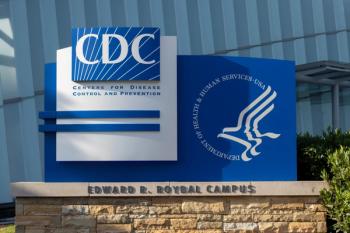
6 Ways to Prevent Cardiovascular Disease
Pharmacists are in a great position to impart valuable heart-related wisdom to their patients.
Pharmacists are in a great position to impart valuable heart-related wisdom to their patients.
Cardiovascular disease (CVD) continues to be the leading cause of death in both men and women, accounting for about a quarter of all deaths in the United States.
Since most states currently allow pharmacists to provide expanded patient care through collaborative practice agreements, pharmacists
Because patients see pharmacists as both community members and health care counselors, they are willing to take a pharmacist’s advice on heart disease prevention steps.
Some CVD risk factors such as age, gender, and family history cannot be modified, but the following are a few of the preventive steps that pharmacists can encourage patients to take:
1. Stop Smoking.
The general consensus is that smoking or using tobacco products of any kind is one of the most significant risk factors for CVD.
The US Centers for Disease Control and Prevention estimates that 70% of US adult smokers want to quit smoking, and millions more have already attempted to do so. This willingness presents a patient counseling opportunity for pharmacists, who are in a
A smoker’s risk of developing CVD falls to nearly that of a nonsmoker just 5 years after smoking cessation. Because most smoking-cessation products are available OTC, there’s no day like today for pharmacists to counsel a patient to quit.
2. Stick to a Heart-Healthy Diet.
A diet rich in fruits, vegetables, and low-fat dairy products that is also low in sodium and saturated and trans fats is the best course for patients to prevent CVD.
What may not be so obvious, however, is the fact that certain patients must
Despite these barriers, pharmacists should take the time to emphasize that heart-healthy foods are key to lowering CVD risk. They can also let
3. Set Fitness Goals.
Exercising for at least 30 minutes most days a week protects against heart-related issues by controlling lipid levels, reducing blood pressure, preventing obesity, and improving inflammatory and hemostatic factors.
A recent study published in JAMA Internal Medicine sought to determine how cardiorespiratory fitness helps reduce the risk of CVD among younger patients—a group that is not often the focus of such studies. Notably, the investigators found that cardiorespiratory fitness among younger patients was not associated with a reduction in coronary artery calcification, even though the exercise helps older patients reduce it.
“Efforts to evaluate and improve fitness early in adulthood may affect long-term health at the earliest stages in CVD pathogenesis,” the study authors concluded.
4. Take Low-Dose Aspirin Therapy.
Health care professionals have long touted the benefits of adhering to a
A 2014 study involving 3500 middle-aged Americans who did not have CVD but qualified for preventive low-dose aspirin therapy based on their risk factors showed that 34% of men and 42% of women were never informed by their primary health care providers about this therapy.
Pharmacists can fill this knowledge gap by counseling patients about the potential benefits of low-dose aspirin so that they may bring the subject up with their prescribers.
5. Reduce Stress.
Stress has been
In addition to providing stress management tips, pharmacists can direct patients to the American Heart Association online resource for behavioral stress management techniques.
6. Don’t Rely on Vitamins, Dietary Supplements, or Nutritional Aids.
Although Americans spend billions of dollars a year on these products, the US Preventative Services Task Force previously
Newsletter
Stay informed on drug updates, treatment guidelines, and pharmacy practice trends—subscribe to Pharmacy Times for weekly clinical insights.




















































































































































































































